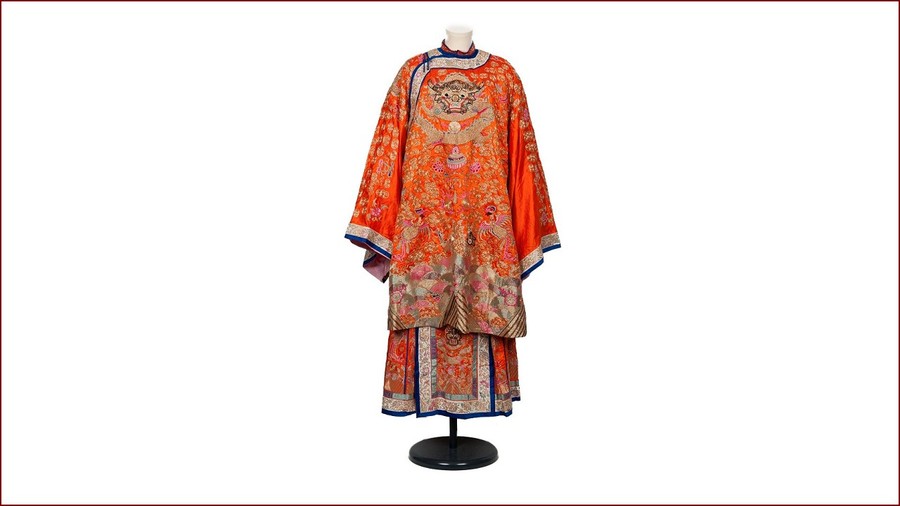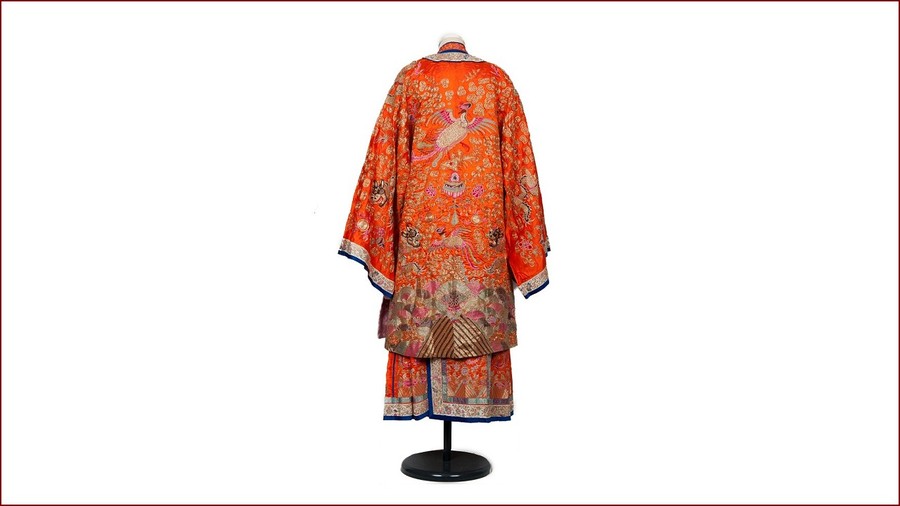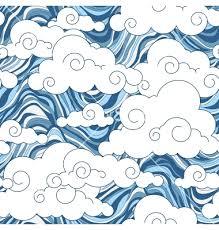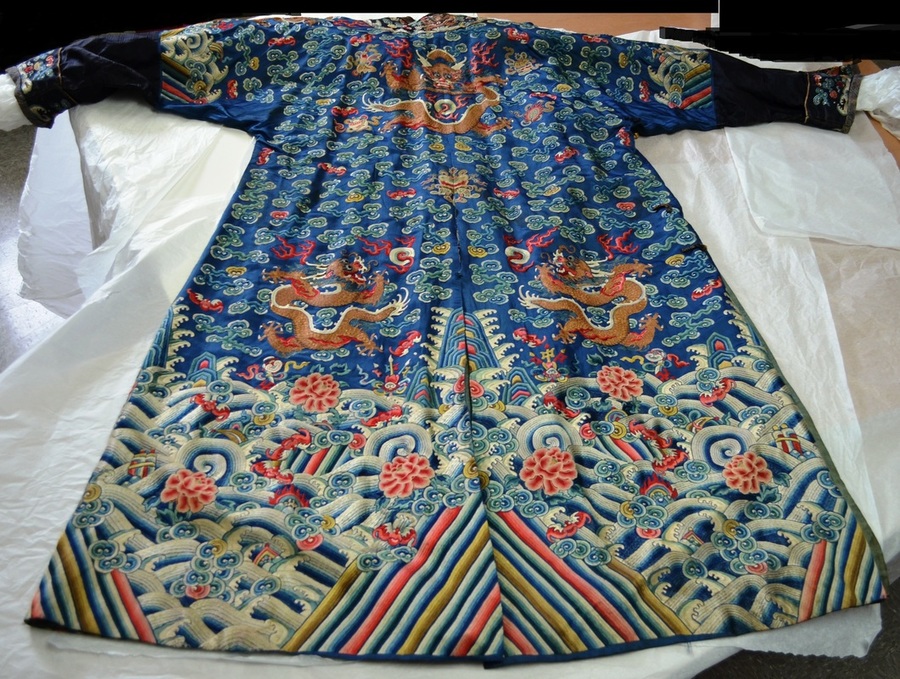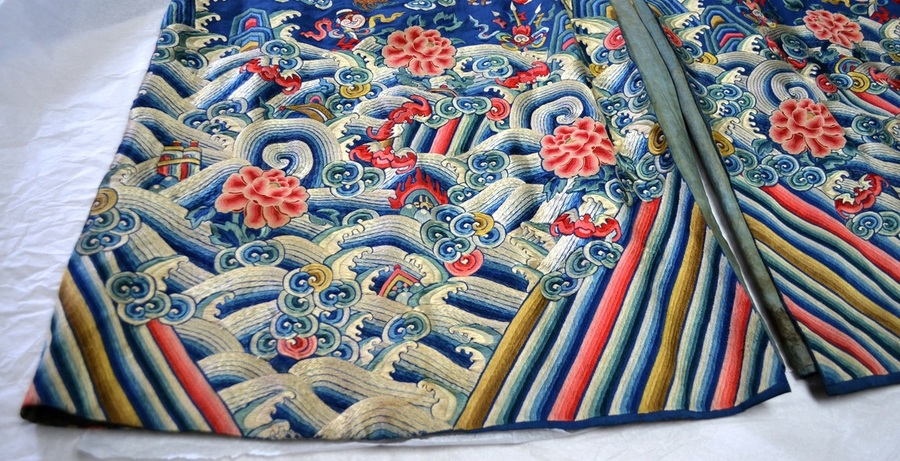User:0863700
FANTASTIC FORGERIES
MY PICK
Peranakan , Jawa , Indonesië
date:
ca. 1900
measurements:
108 × 70 × 20 cm 170cm arm wideness
embroidery, silk
The orange jacket and skirt are put together to become a traditional wedding costume for the Peranakan Chinese.
Orange was a very beloved color for the Peranakan Chinese and the coat is called ‘mang ao’ , dragon coat.
This color orange was called ‘kuning pinang masak’ and referred to the yellow/orange color of the betel-palm.
The coat has different embroidered motives like a dragon, phoenix, peonies, clouds, mountains and waves.
The dragon and phoenix together stand for marriage luck. The clouds, mountains and waves represent air, land and water and with that the cosmos.
WHY
I picked this costume because I am interested in Asian culture and there history and crafts.
This costume fascinated me because I found out that in the time this costume is made there was a emigration stream of Chinese people coming to Indonesia.
Because of this mingle the traditional crafts of both lands merged together. Like Chinese embroidery with Indonesian batik.
Also all the pictures/ illustrations have a meaning and they value this a lot and they tell a sort of story.
This is something I like in a costume or garment, you can tell a story by this and in my own work I use a lot of prints.
I also wanted to link it with my Major Fashion design so I can discover new crafts and continue with my development in the major.
REPLICA
To make a replica of the wedding costume I want to do more research about the different illustations and meanings of these, discover more about the Chinese/Indonesian history and techniques used in this time.
After this desk research I want to start with material experiments to replicate the costume using modern day crafts or digital techniques and give the costume a new look.
RESEARCH
CHINESE JIFU
SYMBOLS IN SILK
In vibrant blues, greens, reds, and yellows, intricately embroidered motifs rich with symbolism cover this Chinese silk jifu from around 1900. It reflects a style introduced by the Manchu in the 1600s when they arrived in China, a style which continued to be influential throughout the Quing dynasty. The garment would have expressed the wearer’s Manchu ethnic background. The Manchu style includes elements that suggest the garment could be worn while riding a horse, such as the split front and the crescent shape at the ends of the sleeves, which protect the back of the hands. Of course, a fine robe such as this one would not actually have been worn for riding. A jifu is a semi-formal garment made to be worn at important government functions. The robe is made of a deep blue silk satin, and lined with a pale blue lightweight silk. T he decoration is hand-embroidered silk and some metallic thread used for the bodies of the dragons. The choice of embroidery rather than woven designs is one of the clues that it is from around the turn of the 20th century. Another elegant detail is the several metal buttons that close the front of the robe.
This jifu is decorated with a number of Buddhist symbols and others from Chinese culture. For example, the peonies symbolize prosperity, and the small red creatures are stylized depictions of bats, symbolizing happiness. The association between bats and happiness has its origins in a pun, as the words for “bat” and “happiness” are pronounced identically in Mandarin Chinese.
The main symbols on the robe are dragons, appearing on the chest, torso, shoulders, and collar. In the Chinese tradition, dragons represent imperial authority, which is appropriate for a robe designed to be worn for government occasions.The dragons take the center on a background that represents the visible universe, including rocks, clouds and water that cover most of the robe. The prism-like design at the corners represents the earth, surrounded by the universal ocean, represented in the robe’s border. The wearer of the robe completes the cosmology symbolized in the designs. The wearer’s body represents the axis aligning earth and heaven, while the neck opening in the garment represents the gate of heaven, and the wearer’s head represents the realm of the spiritual.
